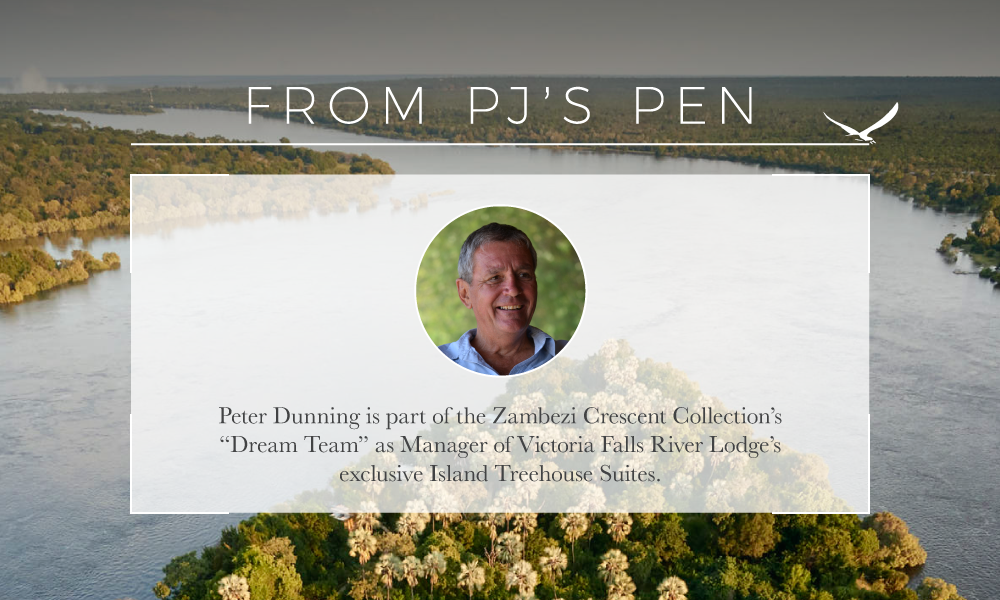As I begin writing the blog on 29th October we are still staring up at the brassy blue sky, and we are still without a drop of rain here. As expected, temperatures continue to climb and no rains are forecast at least until 5th November when the forecast ends. When they are not out on activities, our guests are either in the plunge pools on their decks or seeking refuge in their air-conditioned rooms. There is some comfort in the fact that humidity is very low, but it is fiercely hot nevertheless.
Yesterday the maximum was 42 degrees Celsius (108 degrees Fahrenheit), and the coolest temperature in a 24-hour period was 25 degrees Celsius (77 degrees Fahrenheit).
The entire country is pretty much without respite until the start to the rainy season, and we are not alone. Severe drought is also affecting Namibia. 41,000 cattle have died over the last ten months, and more than 60,000 livestock have perished due to extreme drought conditions between October 2018 and July 2019. These statistics exclude wild life. The Okavango Delta in Botswana is in much the same state.

In an average year, the river at Victoria Falls bottoms out in early November before it starts to rise slowly due to rains in Eastern Angola and Western Zambia. These are the result of the Intertropical Convergence Zone which should migrate southwards at this time of year.
Recently there has been lots of frankly irresponsible reporting on the state of the Falls, with some media reports suggesting that there is a danger of the Falls drying up completely in years to come.
The Zambezi is Africa’s fourth longest river running 2,700km (1,700 miles) from its source to the Indian Ocean. We live on the banks of the river, and of course it continues to flow across its full width, even now, albeit very shallow. A recent aerial photo of The Falls reveals the bare expanse of rock now evident, but this happens every year at this time, though not as bad in an average season.
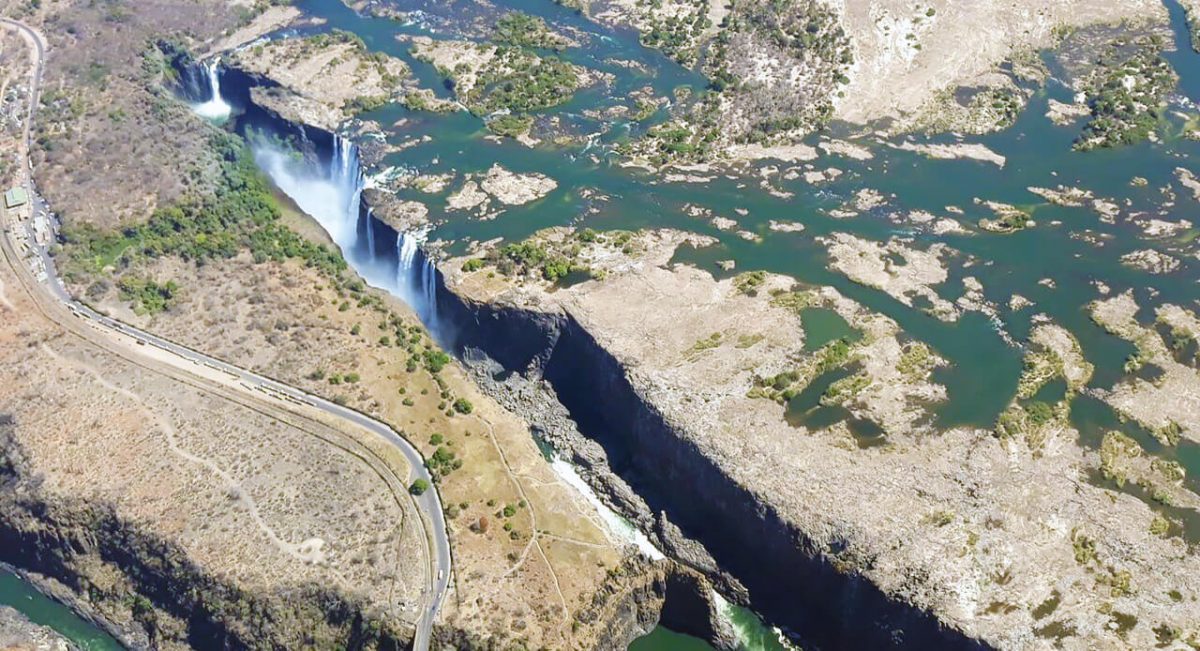
As already scarce food sources become even more scarce, we are finding more unusual visitors to the island. We now have a beautiful young Bushbuck in residence, for the first time since we built here. Baboons continue to visit in small numbers, and are reduced to eating the pods of the sausage trees. Three male Kudus come and go. The Mongoose family seem to make a living somehow, and show no signs of losing weight. Elephants are now infrequent arrivals, but they still visit from time to time.
It amazes me that herbivores exist at all under these conditions. The Zambezi National Park seems to consist only of bare ground and leafless trees.
The predators are making the most of these conditions, and reports from Hwange National Park to our south suggest that weakened baby elephants are succumbing to lion and hyena. It is sometimes forgotten that everybody in the bush has to eat.

Moving on to more pleasant news, I boated upstream about ten days ago in the late afternoon to watch about 50 Pink Backed Pelicans who have taken to roosting on a sandbank near the Zambian side of the river. They did not tolerate my getting too close in my boat, so the photos are not the best, but it’s an unusual and beautiful sighting here.
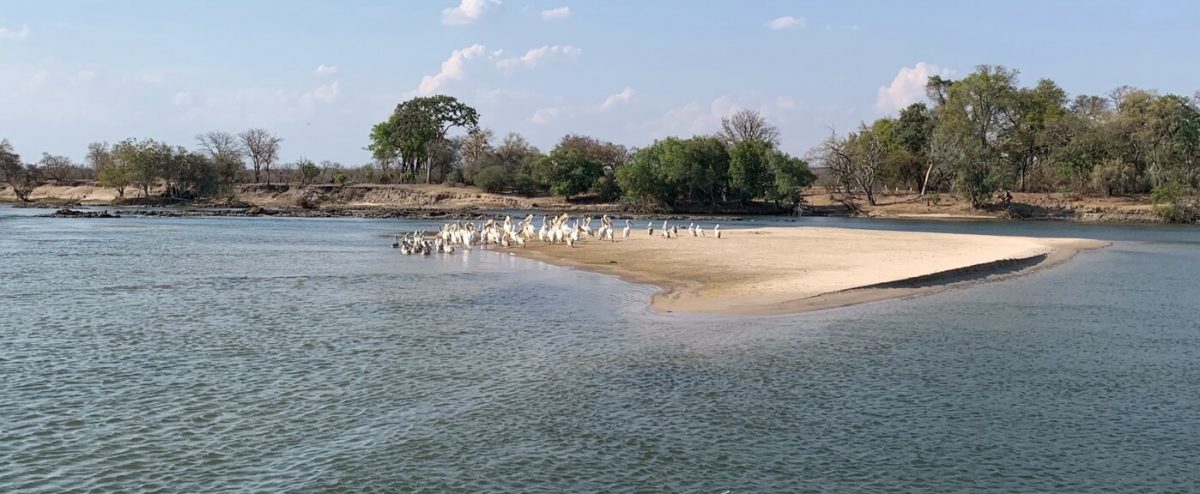
On my way upstream I found a tree on the other side with what look like white branches near the crown. Marabou Storks defecate on their legs to help cool themselves down, and they have favourite perches where the white dung covers the branches.
They have bred successfully opposite the island and every day we see great numbers of them circling slowly above us catching thermals to great heights.
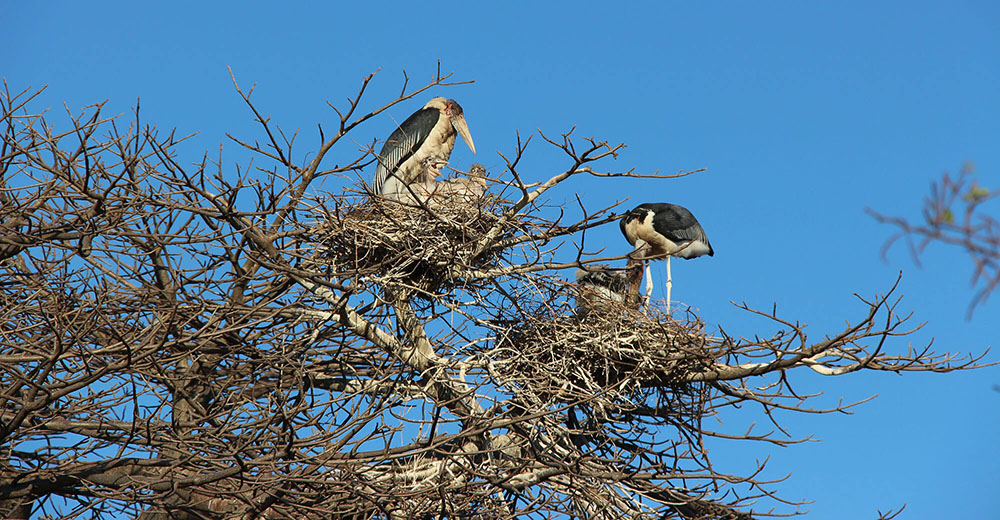
The Combretum I described in my last blog have produced their pods, and they are now dropping to the parched earth waiting like everything else living here for the rains.
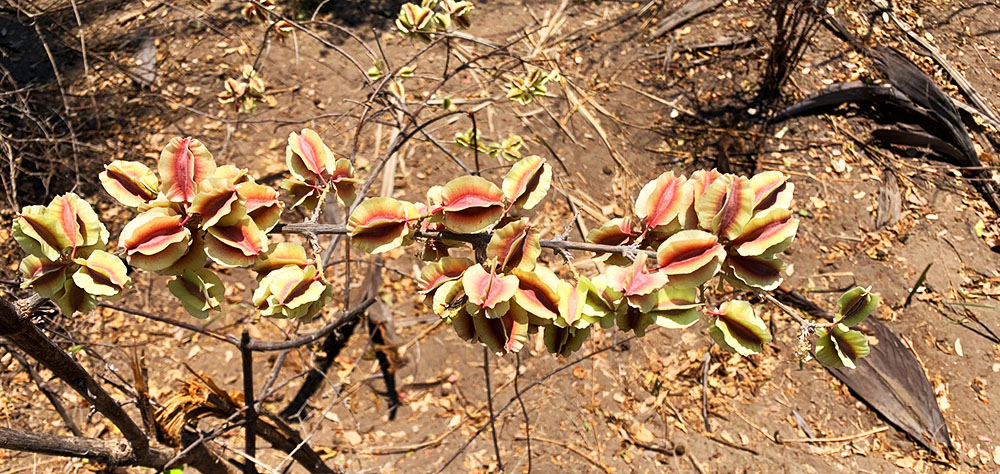
Pre-season forecasts suggest that in the first half of the season we can expect slightly above average rains, whilst the second half will produce slightly lower than average.
In order for the meteorologists to be vindicated, we need something to happen soon.

